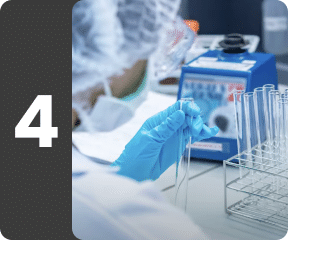Testosterone Free
Understanding Testosterone Free
What is Testosterone Free?
This test measures the amount of free testosterone in your blood. Testosterone is the main sex hormone in males. It controls sex drive, maintains muscle mass, and helps in the production of sperm. Women also have testosterone in their bodies, but in much smaller amounts.
A testosterone test may be used to diagnose conditions such as decreased sex drive, infertility, erectile dysfunction in men, and irregular menstrual periods in women.
The levels are highest during early morning and lowest in the evening. Low testosterone levels can also lead to low sperm count, low sex drive, and hair loss. Men who are diagnosed with low testosterone levels may benefit from testosterone supplements.
What is Testosterone Free used for?
To detect an abnormal testosterone level in males and females
To diagnose the cause of infertility in males and females
To diagnose the cause of erectile dysfunction in males
To detect the cause of virilization (masculine physical features) in females
To find out the cause for PCOS (polycystic ovary syndrome)
To determine the cause of ambiguous genitalia (genitals that are not clearly male or female) in children
To diagnose the cause of delayed or early puberty
What does Testosterone Free measure?
Testosterone free measures the levels of free testosterone present in the blood.
Testosterone is a sex hormone which is mainly found in men. It can also be found in women but in small amounts. Testosterone helps in the development of male physical characteristics.
In men, testosterone is produced by the Leydig cells present in the testicles. It is also produced by the adrenal glands present in both males and females. In females, small amounts of testosterone are produced by the ovaries.
The function of testosterone is to develop secondary sex characteristics which include enlargement of the penis, body hair growth, development of muscle, and deepening of the voice. During puberty, it is produced in large amounts in males. In adult males, its function is to regulate the sex drive and to maintain muscle mass. In adult females, the testosterone gets converted to estradiol, which is the main sex hormone in females.
The testosterone hormone production is regulated by luteinizing hormone (LH), which is produced by the pituitary gland. As the levels of testosterone rise, the production of LH decreases which in turn slows down the production of testosterone. This is due to the negative feedback system, in which one entity controls the production of others. Similarly, when the levels of testosterone fall, it leads to an increase in production of LH which stimulates testosterone production.
The levels of testosterone are highest in the early morning and lowest in the evening. With exercise, the levels of testosterone increase and with age the levels decrease.
In the blood, about two-thirds of testosterone hormone is bound to sex-hormone-binding globulin (SHBG) and about one-third is bound to albumin. A small amount is present as free testosterone.
Interpreting Testosterone Free results
Interpretations
In males: 8.69 - 54.69 pg/mL
In females ( > 12 years)
Follicular phase: 0.45 - 3.17 pg/mL
Luteal phase: 0.46 - 2.48 pg/mL
Oral contraceptive: 0.55 - 2.01 pg/mL
Post menopausal: 0.29 - 1.73 pg/mL
Reference range may vary from lab to lab*
Frequently Asked Questions about Testosterone Free
Q. In what conditions can the testosterone levels decrease?
Q. Is there any preparation required before the test?
Q. In what conditions can the testosterone levels increase?
Q. What are the symptoms of low testosterone levels?
Q. What are the signs of high testosterone levels?
Q. What other tests are required along with Testosterone Free Test?
Q. How is the blood sample taken?
Q. Is there any risk associated with the withdrawal of blood sample procedure?
Book a Testosterone Free test at home near me





Other tests









